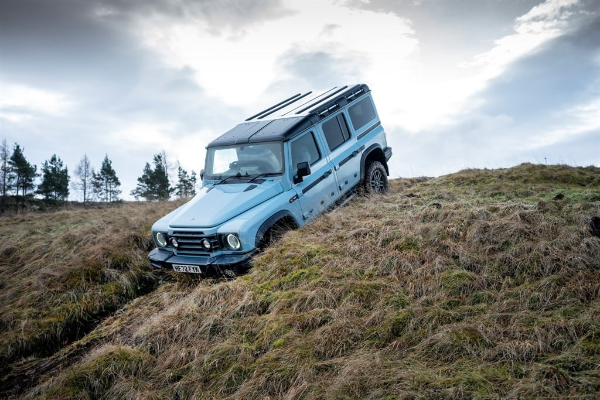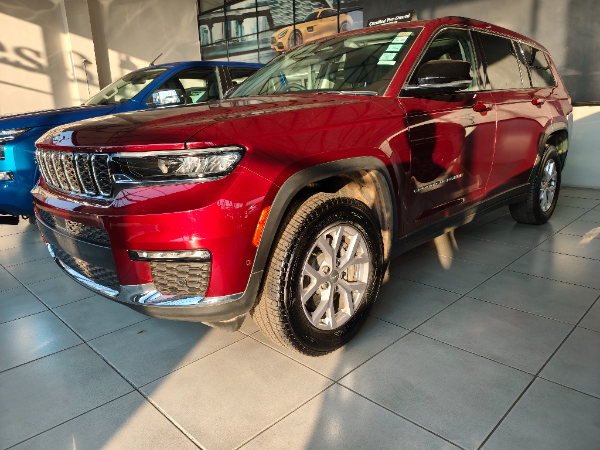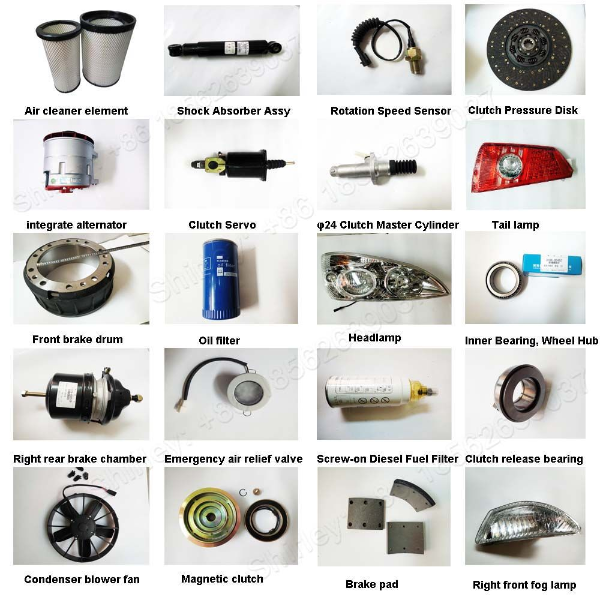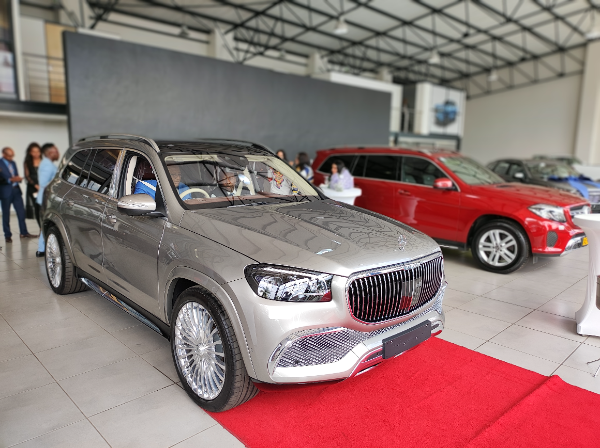2023 Ford Everest (2023) Review
FAST FACTS
Model: Ford Everest 3.0 V6 AWD Platinum
Engine: 3.0-litre V6 turbodiesel
Power/Torque: 184 kW/600 Nm
Transmission: 10-speed automatic
Fuel consumption: 8.5 L/100 km (claimed)
Luggage/Utility space: 259-898-1 818 litres
Late last year, Ford Motor Company of Southern Africa sparked questions when it said that the new Everest should be viewed as a rival to the Toyota Land Cruiser Prado rather than remaining in the "Fortuner" category of bakkie-based SUVs. One of the main goals of our extensive examination was to determine whether the Blue Oval's claim was simply marketing speak (to justify the model's much higher price compared to its predecessor). Everest competes with the acclaimed (but aging) Prado and the brand-new Jeep Grand Cherokee. Ford seems to have a point, at least on the surface...
Packaging and design
The new-generation Everest is undoubtedly attractive, riding high on its enormous (21-inch) multi-spoke wheels and flaunting a bold, upright front-end design distinguished by characteristic "bracket"-shaped LEDs. This is the flagship variation, as shown by the abundance of Platinum badges on the car — so many, in fact, that some people mistakenly believed the automobile had been renamed the "Platinum." As a result, it has a lot more flashy parts than the 2.0 BiTurbo 44 Sport variant. You can judge the design anyway you like, but for what it's worth, most spectators (nearly all of them) praised it.
Even by the standards of modern adventure-SUVs, the Everest is a massive vehicle. It measures 4 940-mm in length (including the towbar), 2 900-mm in wheelbase, 1 837-mm in height, and 2 207-mm in width (including side mirrors). Despite the Jeep being somewhat longer, these measurements make it a decent fit for the Prado (note that the Toyota carries its spare wheel on its tailgate).
The Ford has a respectable 226 mm of ground clearance, which is significantly more than the Toyota and Jeep's reported values (although the wide side steps may appear susceptible). The new Everest can wade 800 mm deeper than its competitors and has a roof strong enough to support a load of 350 kg (static).
2023 Interior of a Ford Everest
Even while the Everest is still built on a bakkie, its inside is technologically advanced and boasts high-end finishing.
The spacious cabin of the newcomer is as stunning, featuring first-rate finishes and meticulous attention to detail. For instance, we appreciate how the door handles are tastefully incorporated into the door pulls, and the stitched leather fascia's upper section adds a welcome touch of "premium-segment class" to the inside of the car. A large panoramic sunroof is included as standard equipment.
It's incredible to think that the Everest's sophisticated interior is simply a bakkie (the new Ranger). The cabin appears to be considerably beyond the capabilities of the Fortuner, MU-X, or Pajero Sport thanks to satin silver details, dark "wood" trim, and a minimalist approach to design.
The Everest leaves very little to be desired in terms of packaging, but we'll get to the comfort and luxurious features later on in this review. The driver's seat includes memory settings, and the front seats are electrically adjustable (lumbar support included). This makes it simple to choose a comfortable driving position and is complemented with a fully adjustable steering column.
The backrests of the seats can recline for added comfort, and the second row is simple to slide forward and fold.
A double glove box, sizable door pockets, pop-out drink holders in addition to the ones in the center console, and a sizable bin in between the seats are all available for storing odds and ends up front.
In the second row, the meticulous attention to detail continues. The bench is divided 60:40, has a measure of backrest angle adjustment, and can move fore or aft (as needed). It is also heated. For powering laptops and other devices, second-row passengers have access to two USB ports (USB-A and USB-C) and a 3-pin 400W inverter (you may need to use an adapter, though).
Those sitting in the second row can choose their preferred ventilation (fan) speed and charge their electronics.
Middle-row passengers can modify the fan speed of the back climate control system using a rotary dial (which can, of course, also be controlled via the front touchscreen). On the roof lining are installed ventilation outlets. The bench is set relatively high (to give kids comfortable "stadium" seating and a decent look out), but this may leave taller people with insufficient headroom.
It's rather simple to reach the third row if you slide and tilt the second row forward. The rearmost seats' passengers don't have much room, as is typical of most 7-seat bakkie-based SUVs; headroom is particularly constrained. When situated behind the driver and a passenger in the second row who are both around the same height, a passenger who is 1.8 meters tall can sit in the third row.
The 3rd-row passenger's knees did touch the 2nd-row seatback, so it was a tight fit. The Everest at least provides a power outlet and ventilation outlets for passengers in the third row.
Rear seats for a 2023 Ford Everest
Despite being less than spacious, the Everest's third row offers its passengers a few comforts.
How about luggage storage? Even though the reported quantity (259 liters) is reasonably excellent, the Everest's load-bay capacity is obviously limited when all 7 seats are occupied. To access the tools, the boot floor lifts up, and there is a tiny compartment for other miscellaneous items as well. The Everest's utility space increases to 898 liters when the third row is folded down (electrically, by pressing buttons located on the side of the load bay) (which is voluminous, but not quite Prado-sized).
Finally, it's important to mention that the Everest 3.0 V6 AWD Platinum is equipped with a detachable tow hook as standard equipment and that the tailgate is electrically driven. Remember that the Ford's (braked) towing capacity has grown by 400 kg compared to the previous design (its maximum rating is 3 500 kg).
The 10-speed automatic transmission, which works flawlessly with the V6 turbodiesel, has been further enhanced by Ford.
Efficiency and Performance
The brand-new 3.0 liter V6 turbodiesel engine of the Everest is one of the vehicle's major talking points. At a satisfyingly low 2 500 rpm, it produces a peak torque of 600 Nm and a monstrous 184 kW at 3 250 rpm.
The flagship's permanent 4-wheel-drive system is driven by the engine through an upgraded 10-speed automatic transmission, albeit the majority of on-road driving will be done in 2H mode. Ford doesn't provide performance numbers, but we can attest to the powertrain's energetic performance.
The top-rung Everest made short work of our lengthy journeys during the holiday season, even when laden with a full complement of passengers (with as many squeezed into the cabin as possible), surfboards fastened to the roof, and bicycles mounted on a rack at the back.
There are numerous display options available in the stunning digital instrument cluster.
Along with having excellent overtaking acceleration when needed, the Ford's 10-speed transmission also ensured that the Everest never seemed hesitant or "laggy." You won't miss the lack of squeaky paddles behind the wheel because the transmission is THAT excellent (well-calibrated). You can manually shift if you really, really want to by pushing buttons that are positioned on the side of the gearbox lever.
Unexpectedly poor fuel economy is a drawback of the powerful performance of the 3.0 V6 AWD Platinum. Ford claims an absurdly optimistic average consumption figure of 8.5 liters per 100 kilometers, but even when driven in Eco mode with an eye toward efficiency, a more accurate consumption figure is closer to 10.5 liters per 100 kilometers. This means that the 76-liter tank will have a maximum range of 723 kilometers.
The Prado's two tanks, which together hold 150 litres of fuel, may be a decisive factor if you frequently go long distances "into the unknown."
The Ford adventure SUV is well-equipped to meet the needs of the always-plugged-in generation.
Features and Comfort
It would take a very long time to list all the standard features included with the Everest 3.0 V6 AWD Platinum; instead, use our convenient compare tool. We will, however, highlight the key characteristics. Ford refers to the Everest's cabin as its occupants' "haven" in its launch brochure. The Everest has class-leading NVH (noise, vibration, harshness) management, which is a fantastic base on which to build a comfy cabin, so it's a pretty apt description. Particularly road and engine noises or vibrations are amazingly muted, and only a very tiny rustle occasionally comes from the area around the large side mirrors. Again, little touches like these make the Everest's cabin more upscale than those of its conventional counterparts.
Furthermore, Ford has installed a staggering number of driver assistance or safety systems, including adaptive cruise control, forward collision assist, rear cross-traffic alert with braking (very useful on a big vehicle like this), lane-keep assist, and even active parking. We've already mentioned the excellent seats (heated and cooled at the front, plus a heated multifunction steering wheel). Of course, as with many modern cars, some of these systems can be a little obtrusive at first, but you can explore the settings (using the enormous 12-inch touchscreen set up in portrait mode) and either remove some of them or modify their sensitivity.
Although the enormous touchscreen with SYNC4 is remarkable, is it unnecessary for a bakkie-based product?
We now reach another important topic of discussion. The large touchscreen appears quite clever, but several people have expressed worries that the complex configuration goes too far (particularly for a bakkie, or a variant thereof). However, it seems quite at home in a luxurious SUV and makes it possible to fine-tune things that would have needed numerous buttons. Fortunately, you can still utilize physical buttons or knobs to access the controls you use the most (fan speed, temperature control, volume, etc.).
We liked how the SYNC4 system's menus were laid out and how intuitive it was. Wireless charging is offered, and Bluetooth, Android Auto, and Apple CarPlay are all enabled. Three USB ports are available up front, including one that is fixed on the windscreen and can be used to power a "dash cam," for example. The USB-A and USB-C connections are in front of the 'charging pad.
If we had to pick, we'd say that the Ford's surround-view camera system left us wanting. Although it does include a 360-degree view and the ability to zoom in on the vehicle's corners, the resolution isn't as sharp as what we've seen on cars twice as expensive, and there is no 3D option, which would have been especially useful in off-road situations.
The Everest provides a wide range of configurable off-road drive modes in addition to automated all-wheel drive.
On and off the road...
The Everest seems the least "bakkie-like" of all the ladder-frame-based 7-seat SUVs on the market because to its wider tracks (increased by 50 mm front and rear, compared with its predecessor), and enhanced suspension (in January 2023). With its big (21-inch) wheels shod in rather low-profile 274/45 rubber, this Platinum-spec version is perhaps more road-biased than ever.
If you want to, you can install 18-inch wheels with better all-terrain tyres if you frequently travel through difficult off-road terrain, including tricky 4x4 courses.
However, as it stands, the Everest's ride is slightly firm (though not painful), and unexpected, abrupt jolts will serve as a reminder that a bakkie chassis is underneath it all. Having said that, the Blue Oval's adventure SUV simply feels grounded, safe, and secure 99 percent of the time. Overall, it appears to be far less "wallowy" than its predecessors, older competitors, and the aging Prado on tar.
2023 Front view of the Ford Everest Platinum
The eye-catching accessories on the Platinum-spec Everest could be damaged during off-road excursions.
But to rival the Prado off-road is a different matter. We chose to avoid situations that could harm the Ford's attractive rims or prominent side steps due to the tyres used on our test unit, but we performed a lot of driving on gravel roads as well as some rock climbing and gully activities.
Regarding approach and departure angles, the Everest is a close match for the Prado (just be careful with the towbar!). Additionally, you can manually choose 4H or 4L in addition to the automated four-wheel drive configuration, and use a dial on the center console to further fine-tune the vehicle settings. There are eight different driving modes—Normal, Eco, Tow Haul, Slippery, Mud & Ruts, and Sand—and an electronic switch for engaging the rear diff lock.
When we did some off-road driving in more challenging conditions, it was abundantly clear that even when rolling on road-biased tyres, the combination of stonking torque and clever off-road systems makes the Everest a true Adventure SUV — not a show pony. We found the Everest's driving experience to be quite superb on gravel roads. Oh, and there are also tire pressure sensors and particular underbody protection installed.
The new Everest is indeed "Prado-rivalling," as Ford boasts; other off-road SUVs are insignificant in contrast.
Ford Everest 3.0 V6 AWD Platinum model and 3.0 liter V6 turbodiesel as the powertrain
Torque/Power Ratio: 184 kW/600 Nm
Automatic 10-speed transmission
Fuel usage is 8.5 L per 100 km (claimed)
Space for bags and other items: 259-898-1 818 liters
Our judgement
With the introduction of the new Everest, Ford has raised its flagship SUV above the competition. In a single action, it has rendered the still-relatively-new Isuzu MU-X feeling distinctly out of date and has set a lofty new bar for Toyota to go for with its next Fortuner, which will certainly also shift upscale. However, as of now, this is the best bakkie-based SUV you can get; it combines the latest in technology with premium, luxury on-road driving and true adventure capability.








